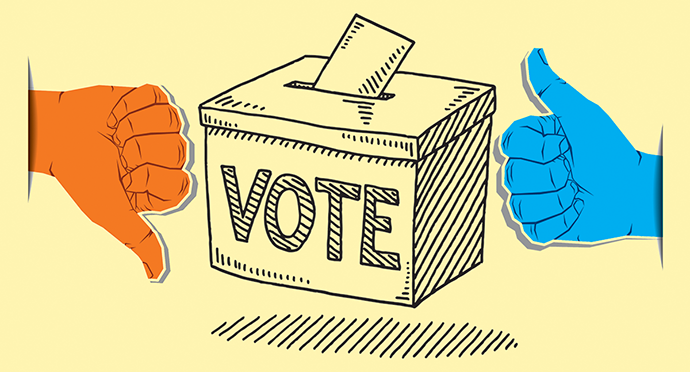Trending
Victory of major propositions show California’s priority on housing crisis
Real estate factored into Tuesday's election, as Propositions 1 and 2 passed, while Proposition 5 was defeated

UPDATED, Nov. 7, at 9:56 a.m.:
Californians approved two of three ballot measures that would allocate billions of dollars over the next few decades to alleviate the state’s housing crisis, which has seen steadily rising prices continue to squeeze people out of the state.
Proposition 1
With 97 percent of precincts counted, Proposition 1 prevailed with 54 percent support, an indication that voters were willing to foot some of the bill to help tackle the housing crisis. State propositions require 50 percent support to pass.
Proposition 1 authorizes the state to sell $4 billion in bonds to fund existing housing programs, including for low-income residents, veterans, farmworkers, mobile homes, infill, and transit-oriented projects.
The opposition did not spend heavily to defeat the measure, but there was resistance. Some opponents said affordable housing programs don’t do enough, and only end up helping a few people. Others pointed out that the measure didn’t go far enough in alleviating the hurdles involved in the entitlement process, which has made it difficult to build affordable housing in Los Angeles.
About $1 billion will go to veteran housing. Another $1.5 billion will go to local governments and nonprofit developers that build housing for families making less than 60 percent of the area’s median income. The remaining funds will be used for transit-oriented projects and regional planning initiatives.
The proposition, if passed, is expected to cost the state $170 million per year for the next 35 years.
Proposition 2
Proposition 2 won more handily, with 61 percent support. The measure will authorize $2 billion in bonds for the No Place Like Home Program and other existing programs for people with mental illness. The programs include housing programs for those with mental illness who are homeless.
Opponents to the bill argued money should go to treatment programs instead, while others pointed to the failures and struggles of getting these types of projects off the ground, even with additional funding. For example, Mayor Eric Garcetti’s “A Bridge Home” project has started slowly, hitting more than a handful of speed bumps so far, including protests and angry town hall meetings.
The proposition will allow the state to pay back the $2 billion using money raised from Proposition 63, passed in 2004, which taxed people an extra percent on every cent they made over $1 million annually.
Proposition 2 is projected to cost $140 million per year in county funds.
Proposition 5
In a surprise development, Proposition 5, which would have changed requirements for property owners to transfer property tax base to new properties, was easily defeated. With 97 percent of precincts counted, the measure fell short, garnering support from only 42 percent of votes cast.
For years, Californians approved laws that rewarded homeowners for keeping properties off the market, which some say contributed to the housing crisis.
Proposition 5 was an attempt to alleviate the problem by building on two initiatives approved in the 1980s. One allowed buyers 55 years and older to transfer lower assessments from a home they sold to their new home, as long as the new home was of equal or lower value. Propositions 58 and 193, which were passed in the 1980s, allowed parents and grandparents to give their homes to children and grandchildren without an increase in assessed value, regardless of how much it is appraised for.
Proposition 5 aimed to boost the housing market and encourage more older homeowners to downsize – thereby releasing inventory into the market. It would have allowed homebuyers over 55 years old, the severely disabled, or those who had a home destroyed by a disaster, to lower their property taxes when they buy a new home.
Prop 5 also would have empowered homeowners to calculate a new home’s assessment based on the difference between its market value and that of the older home.
Opposition to the proposition was mostly fiscal. According to the state, schools and local governments each would lose more than $100 million in annual property taxes early on, growing to about $1 billion per year.




